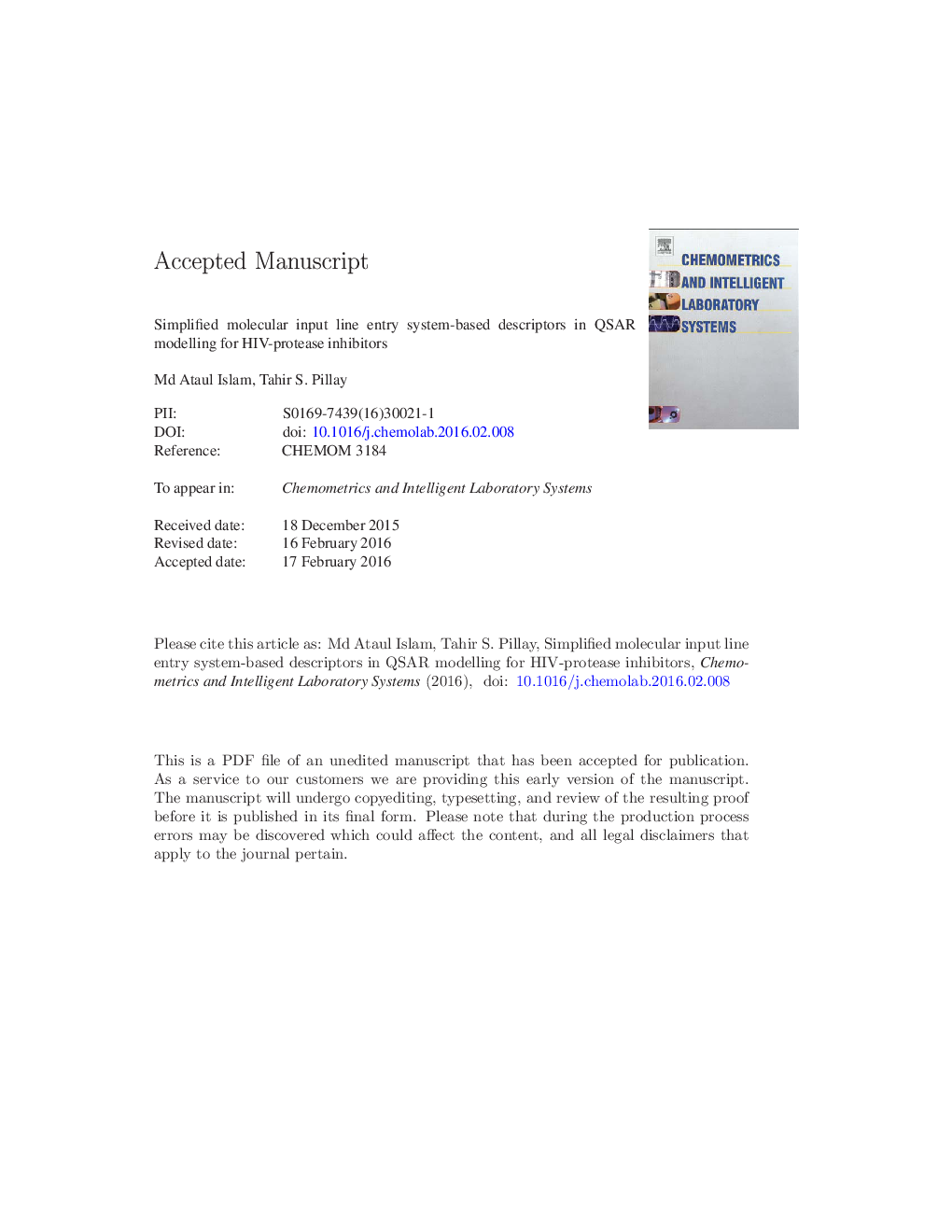| Article ID | Journal | Published Year | Pages | File Type |
|---|---|---|---|---|
| 7562720 | Chemometrics and Intelligent Laboratory Systems | 2016 | 22 Pages |
Abstract
Simplified molecular input line entry system (SMILES) descriptor based quantitative structure-activity relationship (QSAR) study was performed on a set of HIV-protease inhibitors to explore the structural functionalities for inhibition of the HIV-protease. For this purpose a set of HIV-inhibitors was collected from the literature along with their inhibitory constants. Monte Carlo optimization-based CORAL software was used for QSAR model development. Firstly, the dataset was divided into three random splits and secondly each split was divided into training, calibration, test and validation sets. A training set was used for model development whereas the rest of the sets were used to assess the quality of the developed models. QSAR models were developed with and without considering the influence of cyclic rings toward the inhibitory activity. Statistical quality of QSAR models developed from all splits was very good and fulfilled the criteria. The values of R2, Q2, s, R2pred and r2m explained that selected models are robust in nature and efficient enough to predict the inhibitory activity of the molecules outside of the training set. Statistical parameters also suggested that the presence of cyclic rings have a crucial impact on inhibitory activity. The molecular fragments were found to be important for the increase or decrease of the inhibitory activity which explained that models have mechanistic interpretation. This ligand-based QSAR study can provide clear directions to design and modulate potential HIV-protease inhibitors.
Related Topics
Physical Sciences and Engineering
Chemistry
Analytical Chemistry
Authors
Md Ataul Islam, Tahir S. Pillay,
